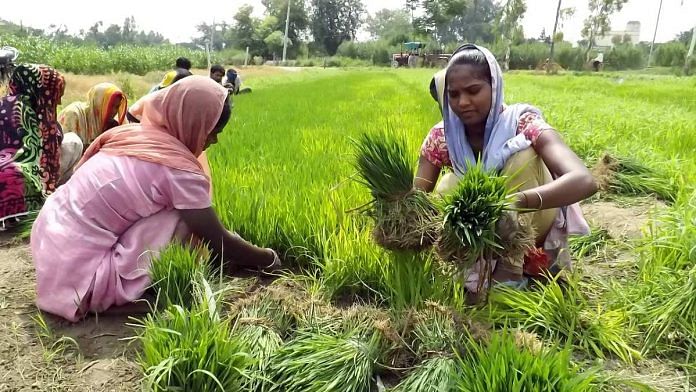Chandigarh: Punjab’s new Aam Aadmi Party (AAP) government is considering a proposal to exclude the state’s big farmers from its electricity subsidy scheme, ThePrint has learnt.
The state government is considering setting up a committee to deliberate on and decide the criteria for exclusion, primarily defining who could be a large farmer based on their landholdings, a senior government official said Thursday.
The AAP is planning to roll out a scheme offering 300 units a month of free electricity to every household, which was one of its major election promises. The party is now considering how best to implement the scheme and free up funds for the promised subsidy, the official added.
The promised subsidy of 300 units of free power could hike the state’s subsidy bill by at least Rs 5,000 crore.
Punjab has a total debt burden of Rs 2.82 lakh crore. Government records show the power subsidy bill for 2020-21 came to Rs 10,668 crore — of which Rs 7,180 crore went to farmers.
“Rationalising power subsidy in agriculture is a necessity at this point,” the official said.
Government estimates show that, as of 31 March 2022, Punjab had 80 lakh domestic electricity consumers, 11.50 lakh commercial consumers, 1.50 lakh industrial consumers, and 14 lakh agricultural consumers. It is for the last category that electricity is completely free at the moment.
Also Read: Power crisis looms in Punjab as coal shortage hits plants amid summer demand surge
Punjab’s big farmers
Punjab has 11 lakh land-owning farmers who operate around 14 lakh tubewells, another government official said. Roughly 1.6 lakh of these farmers have under 2.5 acres of land and are classified as marginal farmers. Around 2.1 lakh have landholdings between 2.5 and 5 acres (small farmers), and 3.7 lakh have landholdings between 5 and 10 acres (semi-medium farmers).
Roughly 3.1 lakh hold between 10 and 25 acres of land and are classified as medium farmers. The largest landholdings — over 25 acres — are with 60,000-odd large farmers.
The second official cited a 2020 report submitted by a group of experts, led by noted economist Montek Singh Ahluwalia, to the Punjab government explaining how around 56 per cent of the total power subsidy that the state has to bear annually goes to farmers who own more than 10 acres.
Punjab’s power bill subsidy came to Rs 6,060 crore in 2019-20, the official said. Medium and large farmers — that is, farmers with over 10 acres of land — accounted for Rs 3,407 crore of that bill, the official said.
In 2018, the Punjab State Farmers’ and Farm Workers’ Commission drafted a policy recommending the withdrawal of the electricity subsidy scheme for farmers who held more than 10 acres of land.
However, Amarinder Singh, then the chief minister, remained reluctant, especially given how politically sensitive the issue was in the state since former Chief Minister Parkash Singh Badal announced free electricity for all farmers back in 1997-98.
R.S. Ghuman, a former professor and head of the economics department at Punjabi University in Patiala, said it was time to reconsider the scheme.
“Several studies have recommended it over the years,” he said. “Withdrawing free power to farmers who have more than 10 acres of agricultural land could save the government around Rs 2,500-3,000 crore a year at this stage,” he said.
(Edited by Uttara Ramaswamy)
Also Read: With ‘window’ to CMO in every Punjab district, Bhagwant Mann looks to ease grievance redressal



